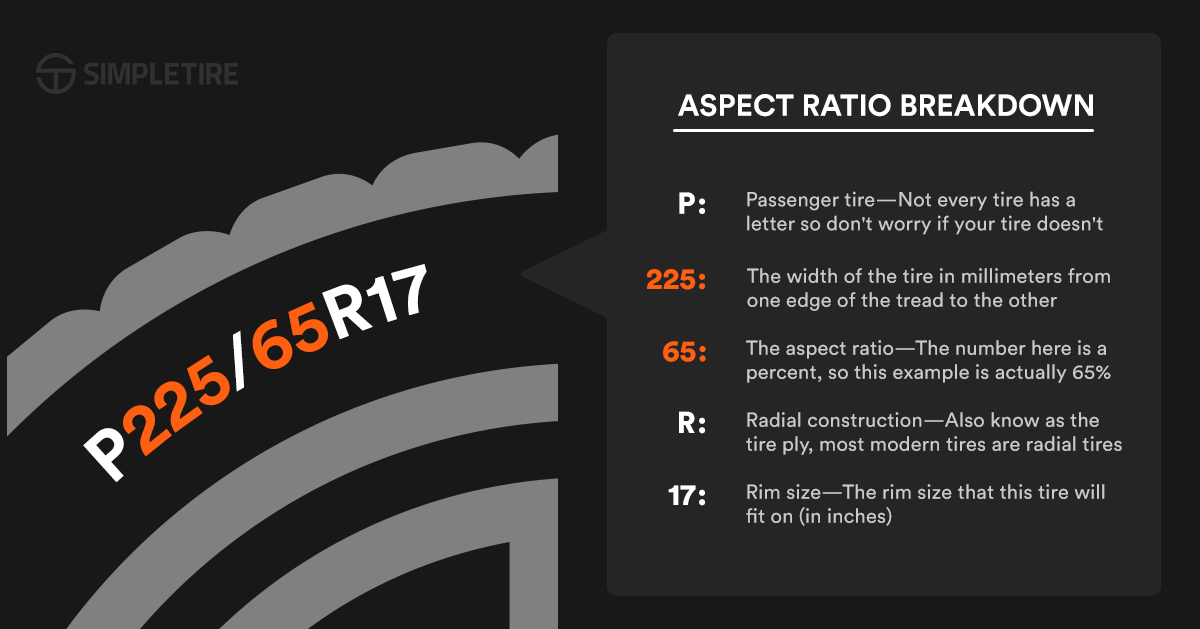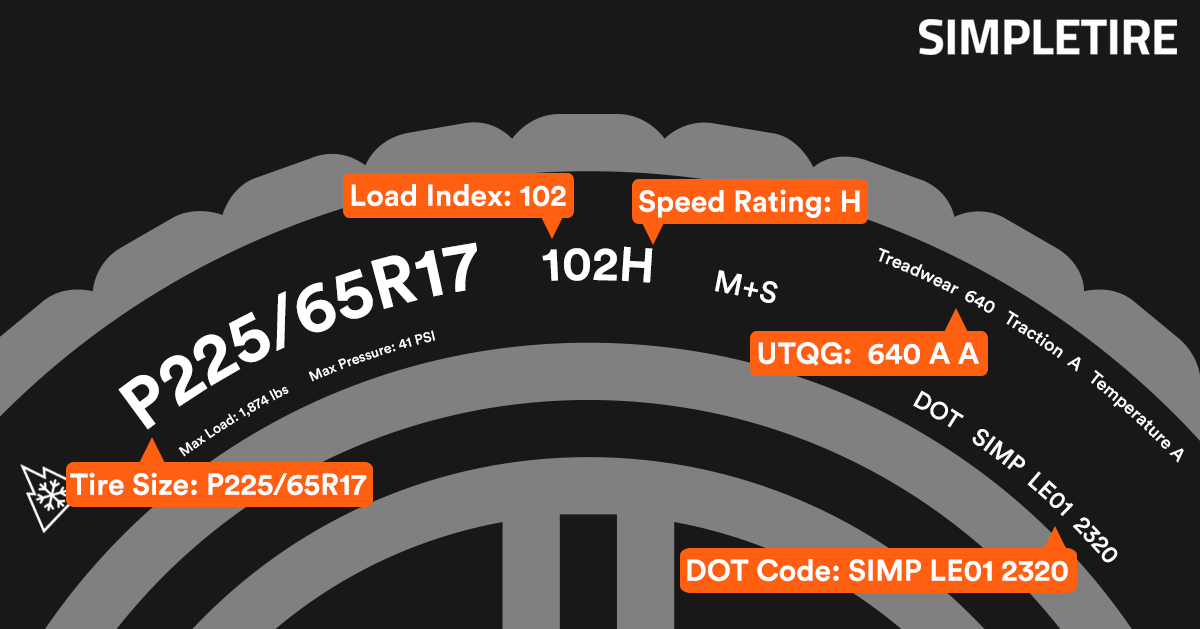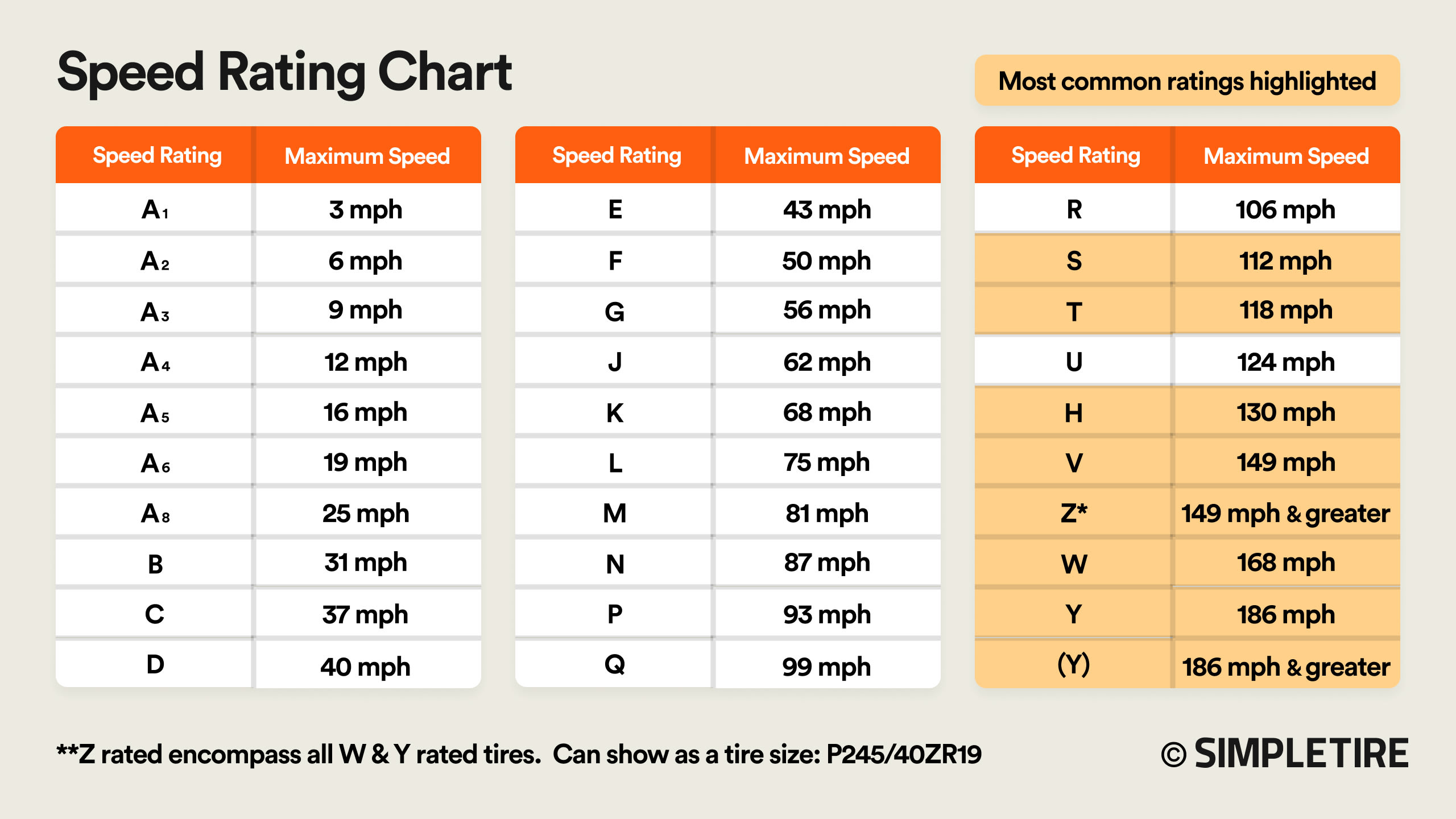Tire News & Information
Free shipping
Best price guarantee
Special pricing
Financing with Resolve
Easy returns

Tire performance metrics are essential for evaluating the safety, efficiency, and overall capabilities of tires under various driving conditions. By understanding these metrics, drivers can make informed decisions when selecting tires that best suit their specific vehicle and driving needs.
Tire manufacturers use standardized tests to determine and assign performance ratings, which provide valuable insights into a tire's strengths and limitations. These ratings encompass crucial aspects such as speed rating, load index, treadwear, traction, and temperature resistance.
Familiarizing yourself with these performance metrics empowers you to choose tires that align with your driving style, environment, and safety requirements. Let's dive into the world of tire performance metrics and explore how they impact your driving experience.
Understanding Tire Performance Metrics
Tire performance metrics are crucial for evaluating the effectiveness and safety of tires under various conditions. These metrics help in understanding how tires will perform in terms of grip, handling, fuel efficiency, and durability.
Key tire performance metrics include:
- Traction: Traction refers to the tire's ability to maintain grip on the road surface, affecting acceleration, braking, and cornering. It is typically assessed through standardized tests such as skid tests on wet and dry surfaces.
- Treadwear: Treadwear indicates the durability of a tire's tread, which impacts how long a tire will last before it needs replacement. The treadwear rating is represented by a numerical rating on the tire's sidewall, with higher numbers indicating longer-lasting tread.
- Temperature Resistance: Temperature resistance measures a tire's ability to dissipate heat, which is crucial for preventing tire failure at high speeds. It is often rated A, B, or C, with A representing the highest level of heat resistance.
- Rolling Resistance: Rolling resistance is the energy loss that occurs when a tire rolls, influencing fuel efficiency. Lower rolling resistance leads to better fuel economy, making it a vital metric for eco-friendly tire options.
- Handling: Handling describes how well a tire responds to steering inputs, affecting overall vehicle control. Tire construction, tread design, and rubber compounds all play roles in handling characteristics.
- Wet and Dry Performance: Wet performance assesses how well a tire performs on wet surfaces, which is crucial for safety in rainy conditions. Dry performance evaluates grip and handling on dry roads, important for high-performance driving.
- Noise Level: Noise level is the amount of noise generated by a tire during operation. Lower noise levels contribute to a more comfortable driving experience.
When selecting tires, it's essential to consider your typical driving conditions, vehicle type, budget, and priorities. Evaluating these performance metrics allows you to find the right balance between safety, longevity, and efficiency for your specific needs. Reputable tire retailers, such as SimpleTire, offer expert guidance to help you navigate these metrics and find the perfect tires for your vehicle.
By understanding and prioritizing tire performance metrics, you can ensure that your vehicle is equipped with tires that optimize safety, handling, and overall performance. Don't compromise on the quality and suitability of your tires—invest in the right set that aligns with your driving requirements and gives you peace of mind on the road.
Decoding Tire Size and Its Importance
Proper tire sizing is essential for ensuring that your vehicle performs optimally. Each element of the tire size notation provides critical details about the tire's dimensions and its compatibility with specific vehicles.
Key Components of Tire Size

- Width: This measurement, listed in millimeters, reflects the breadth of the tire from one sidewall to the other. It influences the tire's contact area with the road, affecting traction and handling.
- Aspect Ratio: The aspect ratio is a percentage indicating the sidewall height relative to the tire's width. Lower ratios generally result in a sportier feel with enhanced handling, while higher ratios offer a smoother ride by absorbing more road shock.
- Construction Type: Tires are classified as either radial or bias-ply. Radial tires, which are more prevalent today, have plies arranged perpendicularly to the direction of travel, providing improved flexibility and road contact.
- Wheel Diameter: Specified in inches, this measurement refers to the size of the wheel the tire fits. Selecting the correct diameter ensures proper fitment and alignment, which are vital for safe driving and efficient performance.
Importance of Accurate Tire Sizing
Choosing the right tire size is crucial for maintaining your vehicle's handling, efficiency, and safety. Incorrect sizing can lead to issues like uneven tire wear, compromised traction, and possible suspension damage. Always refer to the vehicle's owner's manual or the tire information placard—usually found on the driver's door sill—for recommended tire sizes. Adhering to these specifications helps keep the vehicle safe and performing well under various conditions.
A clear understanding of tire size components allows you to select tires that best fit your vehicle's needs, ensuring compatibility with its design and driving dynamics. The right tire size not only enhances the driving experience but also contributes to the vehicle's overall durability and reliability.
Load Index and Its Impact on Vehicle Performance
The load index is an essential specification that determines a tire's capacity to carry weight safely. Displayed on the tire's sidewall, this numerical indicator provides important insights into the tire's strength under proper inflation conditions. Grasping the significance of the load index is vital for ensuring that your vehicle operates efficiently and securely.
Interpreting the Load Index
Each tire's load index corresponds to a designated weight threshold, with values spanning from 0 to 150. Higher numbers indicate a greater ability to bear weight, making it crucial for drivers to select tires that align with the vehicle's load demands. For instance, a tire with a load index of 100 is capable of supporting up to 1,764 pounds. It's important to ensure that the combined load capacity of all tires is adequate for the vehicle's total weight, promoting stability and balance.
Choosing the Right Load Index
Opting for tires with a suitable load index is fundamental for maintaining the vehicle’s structural integrity and driving dynamics. This selection affects not just the vehicle's maneuverability and stopping power but also its resilience over time. Exceeding the tire’s specified load index can cause undue stress, leading to overheating and hastened wear, which may result in tire damage. Such conditions can jeopardize vehicle control and safety, particularly during demanding driving situations or when transporting heavy cargo. It is advisable to refer to the vehicle’s owner manual for the recommended load index, ensuring optimal safety and performance.
Aligning the tire load index with the vehicle's load requirements helps avert issues related to overburdening the tires, which could lead to expensive damages or replacements. By understanding and selecting the correct load index, drivers can maintain a smooth, secure driving experience while extending the lifespan of their tires.
Navigating the Tire Speed Rating Chart

A tire's speed rating is a critical specification that guides drivers in selecting the right tires for their vehicle's speed capabilities. This rating, indicated by a letter on the tire's sidewall, denotes the highest speed at which the tire can safely perform. Understanding this aspect helps ensure that your driving style aligns with your tire's performance limits.
Interpreting Speed Ratings
Speed ratings range from L to Y, with each letter representing a specific maximum speed capability. This spectrum covers speeds from 75 mph to over 186 mph, allowing for suitable options for various vehicle types. For instance, an H-rated tire supports speeds up to 130 mph, making it ideal for regular highway use. Higher-rated tires, such as those with a Z rating, cater to vehicles requiring enhanced performance at extreme speeds.
The Significance of Speed Ratings
Choosing a tire with the appropriate speed rating is essential for maintaining your vehicle's handling and safety across different conditions. The speed rating affects a tire's ability to manage heat build-up, which is crucial for its longevity and performance at high velocities. Mismatched ratings can lead to diminished braking efficiency, compromised handling, and increased risk of tire failure. It's crucial to follow the vehicle manufacturer’s recommendations—typically found in the owner’s manual or on the tire information placard—when selecting tires.
By adhering to the speed rating chart, you ensure that your vehicle’s tires are equipped to handle your driving demands, enhancing both safety and performance. Properly rated tires contribute to a more stable and confident driving experience, allowing you to optimize your vehicle’s potential on the road.
Exploring Key Tire Performance Characteristics
Understanding key tire performance characteristics is essential for making informed decisions that enhance vehicle safety and efficiency. These characteristics — including treadwear, traction, and temperature resistance — play a significant role in determining how well a tire will perform in various driving conditions.
Treadwear Ratings
Treadwear ratings offer a benchmark for estimating how long a tire's tread is likely to endure under normal usage. Expressed as a numerical value, this rating helps drivers gauge the potential longevity of their tires. For instance, a tire with a higher treadwear number suggests a longer lifespan compared to one with a lower number. This metric is fundamental for drivers aiming to balance durability with cost-effectiveness. Routine tire maintenance, such as rotations and maintaining proper inflation, can further enhance tread life.
Traction Grades
The traction grade of a tire measures its ability to maintain grip on slick surfaces, a critical component for safety in wet conditions. Graded from AA to C, these ratings provide insight into the tire's efficacy in stopping on wet roads, with AA indicating superior traction. Having a higher traction grade means that the tire can offer shorter stopping distances in rain or snow, contributing to overall vehicle safety. When selecting tires, consider the typical weather patterns you encounter. Opting for a tire with an excellent traction grade is advisable for those frequently driving in wet climates.
Temperature Resistance
Temperature resistance ratings evaluate a tire's ability to effectively manage and dissipate heat during operation at elevated speeds. This rating is given as A, B, or C, with A indicating the highest capability for heat dissipation. Adequate temperature resistance is crucial for preventing overheating, which can lead to tire failure, especially in high-speed scenarios or long-distance travel. Choosing a tire with an appropriate temperature rating ensures it can handle the thermal demands of your driving patterns and help maintain safety and performance standards.
By examining these key performance characteristics, drivers can make informed decisions that align with their specific needs and driving environments. Understanding the intricacies of treadwear, traction, and temperature resistance empowers vehicle owners to select tires that not only enhance their driving experience but also ensure safety and reliability on the road.
Treadwear Ratings and Tire Longevity
Treadwear ratings provide insight into a tire's expected lifespan under standard driving scenarios. Represented by numbers ranging from 60 to 620, these ratings are designed to serve as a comparative guide for assessing tire durability. A higher rating signifies a tire that can handle more mileage before the tread reaches its limit. Manufacturers derive these ratings through a series of controlled tests, comparing each tire's performance against a benchmark tire.
While treadwear ratings offer a valuable reference point, actual tire longevity depends on various factors. Driving style plays a significant role—consistent hard braking and rapid acceleration can lead to faster tread wear. Additionally, the condition of the roads you drive on can affect tire durability; smooth highways promote longer tread life, while rough or poorly maintained roads may lead to quicker wear. Proper maintenance is crucial, including regular tire rotations, alignment checks, and maintaining correct inflation. These practices ensure even wear across the tires, helping to prevent premature bald spots and uneven patterns that could affect safety and efficiency.
By understanding treadwear ratings and adopting good driving and maintenance habits, drivers can maximize the lifespan of their tires. Proactive care not only enhances safety and performance but also reduces the frequency of tire replacements. This approach ensures that drivers get the most value from their tires, contributing to a smoother and more reliable driving experience over time.
Traction Grades and Wet Weather Performance
Understanding the grip capabilities of a tire in wet conditions is crucial for safety. Traction ratings, distinguished by categories such as superior, high, and moderate, offer insights into a tire's performance during wet braking scenarios. These categories stem from rigorous evaluations conducted on wet surfaces to simulate real-world driving.
Evaluating Traction Quality
Tires with superior ratings are engineered to deliver outstanding stopping power on waterlogged roads, making them ideal for regions with frequent precipitation. High-rated tires, while slightly less effective than their superior counterparts, still ensure a dependable grip in most wet weather situations. Moderate-rated tires meet basic safety standards but may not offer the same level of confidence under extreme conditions. Drivers should consider their environment and typical weather patterns when choosing tires to ensure they meet their specific traction needs.
Enhancing Safety with Proper Traction
Selecting a tire with the right traction rating enhances both safety and driving experience, reducing the risk of hydroplaning and maintaining consistent road contact. In areas with heavy rainfall, tires that can effectively channel water away from the tread ensure that drivers maintain control. This capability not only minimizes accident risks but also instills confidence when driving through adverse weather.
Incorporating traction considerations into tire choices ensures that drivers are well-prepared for wet conditions. By prioritizing traction ratings, vehicle owners can achieve a harmonious balance between reliable performance and safety, providing assurance on every journey regardless of the weather forecast.
Temperature Resistance and High-Speed Stability
Effective temperature management in tires is vital for maintaining stability and safety at elevated velocities. A tire's capacity to handle intense heat without degrading ensures that it can sustain performance under demanding conditions. Tires are categorized by their temperature resistance levels—A, B, and C—with A providing the most robust defense against heat accumulation. This classification assists drivers in selecting tires that can endure the rigors of high-speed travel.
Managing Heat for Optimal Performance
Tires that excel in managing thermal energy are engineered to withstand the friction and stress encountered during high-speed driving. This capability prevents the structural breakdown of tire components, safeguarding against potential failures. Adequate heat management ensures that the rubber compounds maintain their integrity, thereby preserving grip and performance. Selecting the right temperature-resistant tire is crucial for vehicles that frequently operate at high speeds or in hot climates, where heat can be a persistent challenge.
Meeting High-Speed Demands
Vehicles designed for high performance require tires that can sustain their capabilities over extended periods. These tires must possess enhanced construction features that allow them to resist the thermal stresses of high-speed driving. Tires with top-tier temperature resistance are essential for these vehicles, ensuring that they can maintain safety and reliability without compromising agility. By choosing tires that meet these stringent demands, drivers can enjoy a balance of performance and security, even in the most challenging driving conditions.
Making Informed Tire Choices Based on Performance Metrics
Selecting the right tires involves understanding how various performance metrics align with your specific driving needs. Your vehicle's attributes, such as its weight, purpose, and design, play a crucial role in determining the ideal tire type. Recognizing these factors ensures that your tires enhance both performance and safety.
Matching Tire Characteristics to Vehicle Needs
Consult your vehicle's documentation to identify the appropriate tire size, load index, and speed rating. These specifications serve as a baseline to ensure compatibility, optimizing handling and efficiency. Following these guidelines not only preserves the vehicle's intended dynamics but also ensures that the tires can support the necessary weight and speed, preventing issues such as premature wear or instability.
Tailoring Choices to Driving Environments
Consider how your driving habits and typical environments influence tire performance. For city driving with frequent stops, prioritize tires that deliver excellent grip and agile handling. For extended highway travel, seek tires with high treadwear ratings for durability and fuel savings. In regions with challenging weather, prioritize tires with superior traction ratings for confidence on wet or icy roads. By aligning tire attributes with your driving scenarios, you ensure optimal performance and safety.
Integrating performance metrics with your vehicle's specifications and driving conditions allows for a well-informed tire selection process. This approach enhances your vehicle's capabilities and ensures a reliable driving experience.
By understanding tire performance metrics, you can make informed decisions that enhance your vehicle's safety, efficiency, and overall performance. At SimpleTire, we are committed to helping you navigate the world of tires with expert guidance and a wide selection of top-quality options. Shop for tires online with us and discover the best deals to keep you rolling with confidence.
Ready to find the perfect tires?
Search By